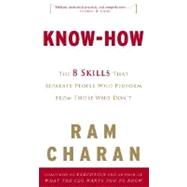
| 1 KNOW-HOW | |||||
|
1 | ||||
| 2 THE FOUNDATION | |||||
|
25 | ||||
| 3 BEFORE THE POINT TIPS | |||||
|
53 | ||||
| 4 HERDING CATS | |||||
|
79 | ||||
| 5 HOW LEADERS ARE MADE | |||||
|
115 | ||||
| 6 UNITY WITHOUT UNIFORMITY | |||||
|
155 | ||||
| 7 THE BUCK STARTS WITH YOU | |||||
|
183 | ||||
| 8 IT'S MONDAY MORNING—NOW WHAT? | |||||
|
213 | ||||
| 9 IN THE COURT OF PUBLIC OPINION | |||||
|
241 | ||||
| LETTER TO A FUTURE LEADER | 265 | ||||
| THE EIGHT KNOW-HOWS | 273 | ||||
| ACKNOWLEDGMENTS | 277 | ||||
| INDEX | 281 |
The New copy of this book will include any supplemental materials advertised. Please check the title of the book to determine if it should include any access cards, study guides, lab manuals, CDs, etc.
The Used, Rental and eBook copies of this book are not guaranteed to include any supplemental materials. Typically, only the book itself is included. This is true even if the title states it includes any access cards, study guides, lab manuals, CDs, etc.
Excerpted from Know-How: The 8 Skills That Separate People Who Perform from Those Who Don't by Ram Charan
All rights reserved by the original copyright owners. Excerpts are provided for display purposes only and may not be reproduced, reprinted or distributed without the written permission of the publisher.